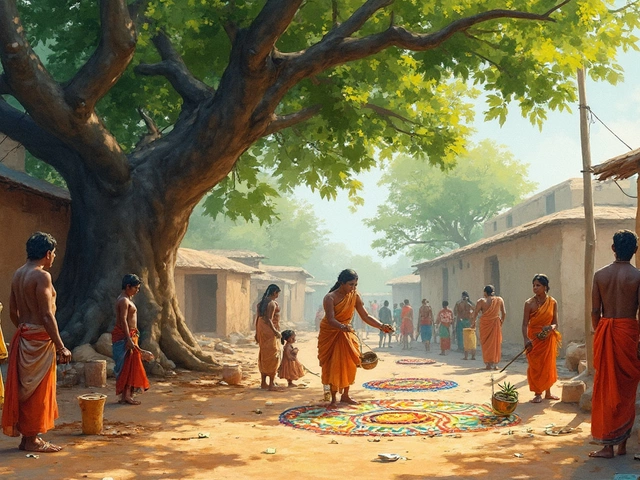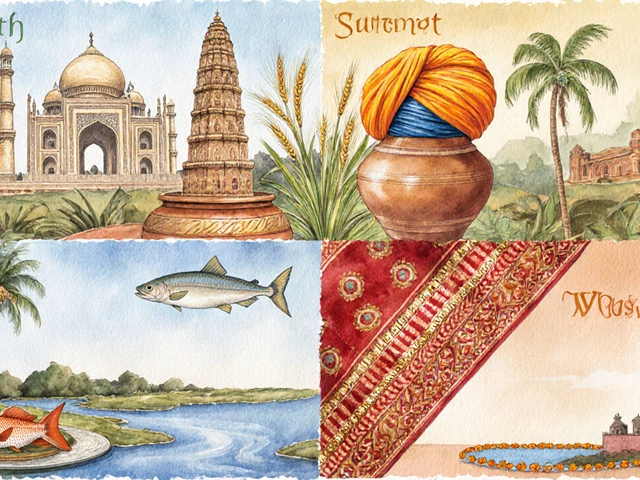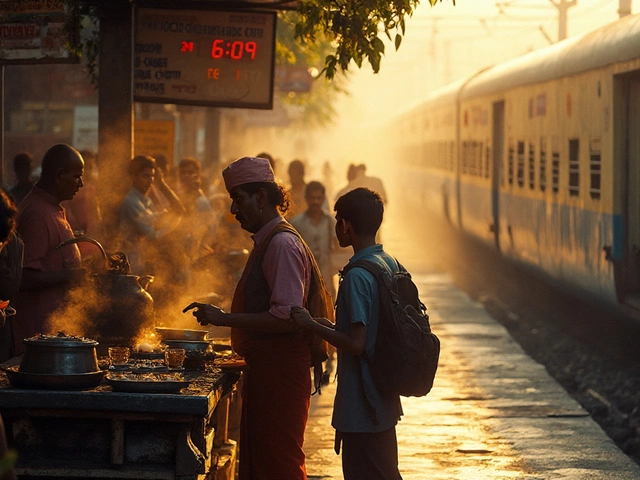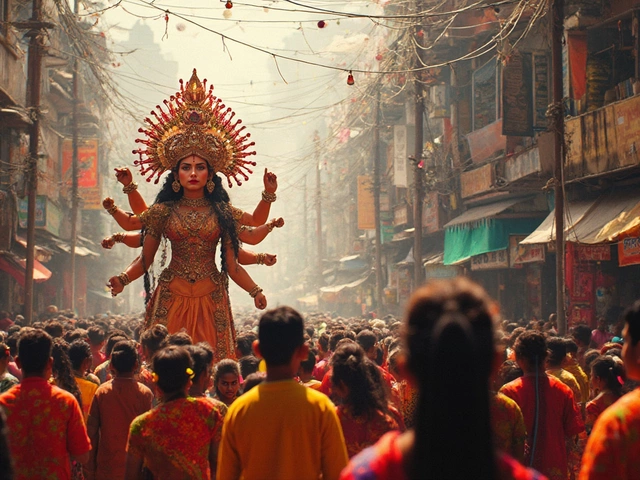When someone passes away in Tamil Nadu, the community comes together, embracing a set of traditional rituals that have been passed down through generations. These customs are not just about saying goodbye; they’re about celebrating the life lived and helping the soul on its journey. Understanding these practices can provide a sense of comfort during such emotional times.
First off, there's the preparation of the body. It’s common for family members to wash and dress the deceased in their finest, often using white or traditional attire. This isn't just about respect; it's a way to offer dignity and sanctity in death.
The next step involves a ceremonial bath, where sacred ingredients like turmeric and holy water are used. It symbolizes purification, ensuring the soul's smooth transition. Witnessing how these age-old practices come alive today is like stepping back into a living tapestry of history.
- Preparation and Last Rites
- Ceremonial Bath and Dressing
- Funeral Procession
- Post-Funeral Ceremonies
- Annual Remembrances
Preparation and Last Rites
In Tamil Nadu, dealing with the passing of a loved one is not just about mourning; it's about honoring life with culturally rich rituals. The first step involves preparing the body, a task undertaken with deep respect and love by family members. The deceased is laid out at home, dressed in fresh garments, often white or the finest traditional attire, as a gesture of honor and dignity.
The family ensures to follow age-old customs meticulously. The body is usually cleaned using sacred items like turmeric paste, which is believed to purify, along with holy water from nearby temples. This process isn’t just about physical cleanliness but also about cleansing the spirit, ensuring it departs in peace.
A significant part of the preparation involves applying holy ash, known locally as 'vibhuti', on the forehead. This practice is rooted in Hindu beliefs, symbolizing detachment from the material world. Relatives and neighbors often join, sharing prayers, memories, and a few tears, transforming the setting into a space of communal support.
In some communities, a 'homa' or fire ritual is performed to guide the soul towards liberation. This involves chanting Vedic hymns, filling the atmosphere with solemnity and spirituality. These death rituals are essential, they reflect the community’s collective belief in compassion and respect, making this challenging phase a shared experience rather than an isolated ordeal.
The entire process is usually organized swiftly, often within a few hours to a day, adhering to traditional beliefs that the soul should not linger in the earthly realm longer than necessary. As generations hand down these practices, each step continues to hold invaluable significance in Tamil culture.
Ceremonial Bath and Dressing
The ceremonial bath, known as the 'Anthaistaana Snaanam,' is a heartfelt ritual in Tamil Nadu that can't be overlooked. First off, the family gathers and prepares to perform the bath, which symbolizes the purification and sanctification of the body. This is where Tamil Nadu death rituals radiate compassion and attention to detail.
The ingredients used in this process are pretty specific. Turmeric is a must-have, known for its cleansing properties. Holy water, often drawn from the local temple, is used to purify the body. The bath not only cleanses but is believed to ease the soul's journey onwards.
After the bath, dressing the deceased comes next. Typically, the body is clothed in a simple white dress, symbolizing purity and peace. In Tamil cultural traditions, white is more than a color; it’s a statement of sincerity and reverence for the departed soul.
Family members pay their respects by placing flowers around the body or garlanding it. These gestures are filled with love and a sense of community, integral parts of the Tamil cultural traditions.
The importance of these steps is reflected in how they’re carried out with devotion. It's not just about routine actions; each part is a collective expression of caring and respect for the deceased, embracing the spiritual aspect of life and death.
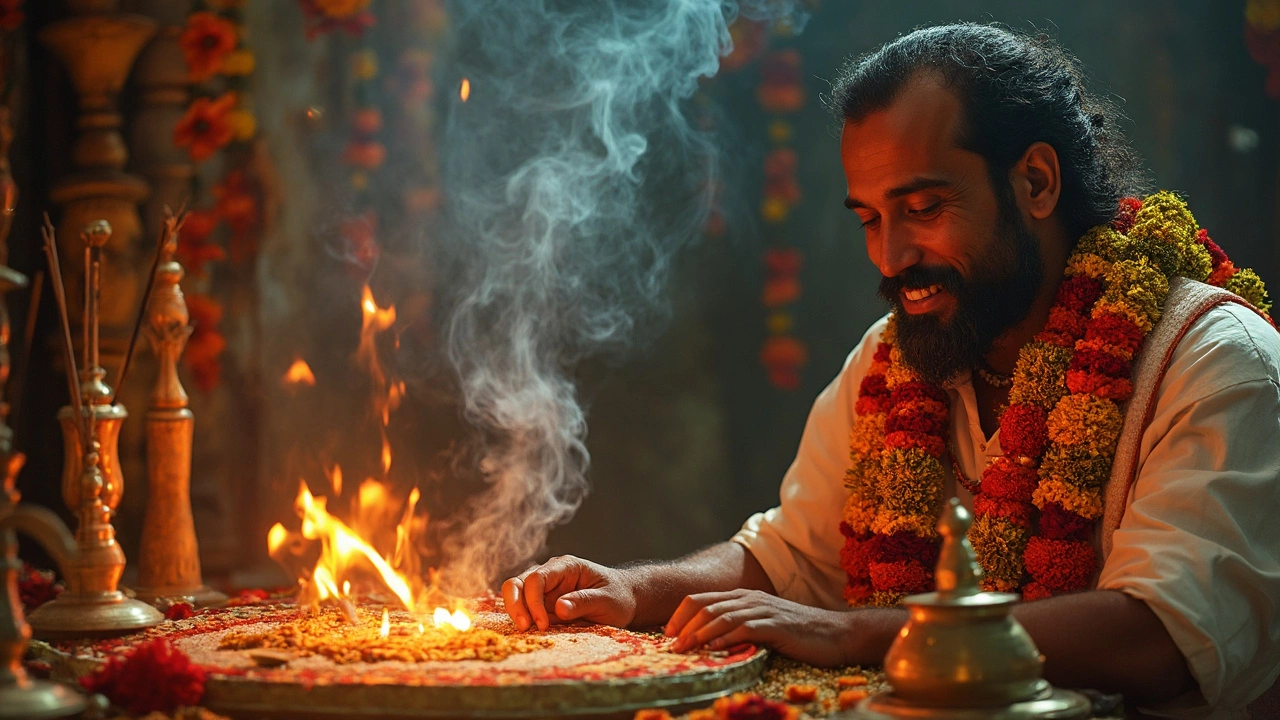
Funeral Procession
The funeral procession in Tamil Nadu is a poignant event that combines solemnity with a sense of communal support. It usually begins at the deceased's home, where family and close friends gather to accompany the body to the cremation or burial site. This journey is more than just moving from one place to another; it's a significant part of bidding farewell.
During the procession, the body is often carried on a wooden stretcher, and this is where tradition shines through with vibrant customs. The stretcher is usually decorated with flowers, especially jasmine and marigold, to reflect purity and respect. Family members often lead the way, with others following, chanting prayers or devotional songs. These chants are considered vital as they guide the soul towards peace.
An interesting aspect is the use of the coconut in the procession. At various points, a coconut is broken, symbolizing the breaking of the earthly bonds and the consideration that life is both eternal yet impermanent. This ritual, a staple of Tamil cultural traditions, serves as a powerful reminder of life's fragility.
It is typical for the procession to make stops at places that were significant to the deceased; this could be a workplace or a friend’s house. Each stop is a moment of tribute, offering those locations a chance to say their final goodbyes.
The participation in the funeral procession isn't just limited to family. The community often turns out to show solidarity, reflecting the tight-knit fabric of Tamil Nadu's social structure. This collective mourning process helps the bereaved in navigating their grief, providing emotional and sometimes even practical support.
The procession eventually concludes at the cremation or burial site, where other critical rites are performed. This transition marks the beginning of the next phase of their journey, both spiritually for the deceased and emotionally for those left behind.
Post-Funeral Ceremonies
In Tamil Nadu, post-funeral ceremonies play a crucial role in honoring the deceased and supporting their journey beyond. These rituals typically occur over the 16 days following death, providing families with structured steps to process their grief and respect their loved ones.
One of the first ceremonies, known as the 'Pindam' offerings, involves shaping rice balls and offering them to crows. Believed to symbolize the departed's ancestors, these humble birds are thought to connect the living family with their lineage. It's a fascinating mix of spirituality and simplicity that keeps the family bonded across generations.
This period also includes the 'Shraddha' rituals which are performed on the 11th day. Family members gather to carry out a set of ceremonies involving chants and offerings. It's more than just a religious act; it’s a way to find peace and closure. The sons of the deceased often wear a traditional ‘mundu’ or dhoti, emphasizing a sense of continuity and heritage.
Additionally, meals are prepared and shared among attendees, fostering community support. Special emphasis is placed on offering favorite dishes of the deceased, almost as if to share one last meal with them.
Finally, the culmination on the 16th day, known as 'Subam,' is meant to signify a return to daily life. The family conducts cleansing rituals at home, inviting a sense of normalcy back into their lives while still honoring the Tamil cultural traditions they've upheld throughout this period.

Annual Remembrances
In Tamil Nadu, honoring the deceased doesn't end with the funeral. Every year, families partake in annual remembrances, keeping the memory of their loved ones alive through various rituals. This tradition is as much about family and community as it is about individual mourning.
The main event here is the 'Shraddha' ceremony, typically held on the death anniversary. It's a way to seek blessings from ancestors and ensure their peace in the afterlife. These ceremonies are often elaborate, involving a priest who conducts rituals like offering rice balls (known as 'pindam') and pouring water (known as 'tarpan') to honor the deceased.
Apart from Shraddha, families might also perform 'Taddinam' during Aadi Amavasai, Mahalaya Amavasai, or other auspicious times according to the Tamil calendar. These aren't just empty words or actions but are believed to favorably impact the spiritual well-being of the departed souls.
Families also ensure that they serve their ancestors' favorite foods as part of the ritual offerings. This isn't just a gesture; it's a heartfelt act of remembrance, making the deceased feel like they're still part of family gatherings.
These Tamil cultural traditions foster a sense of continuity and connection with ancestors, allowing living family members to pause, reflect, and impart values to the next generation. Kids learn about their heritage, and grown-ups find solace in shared memories, strengthening family bonds in profound ways.


